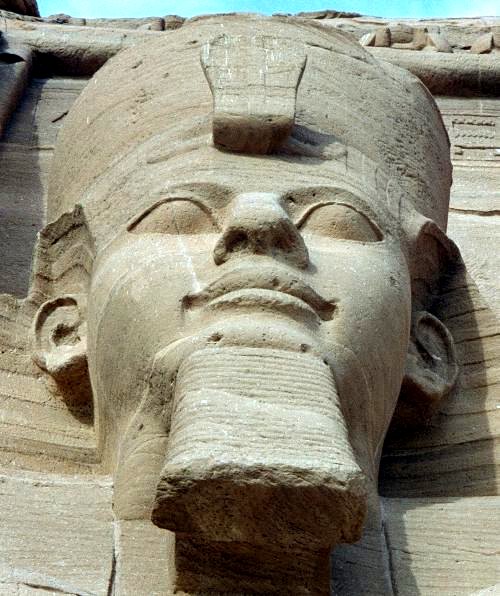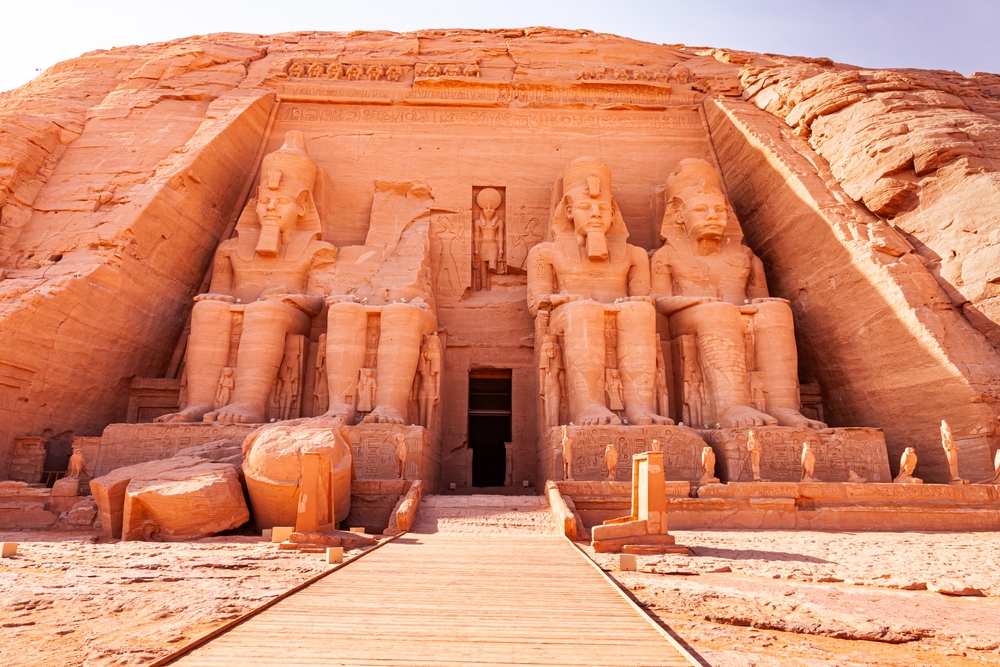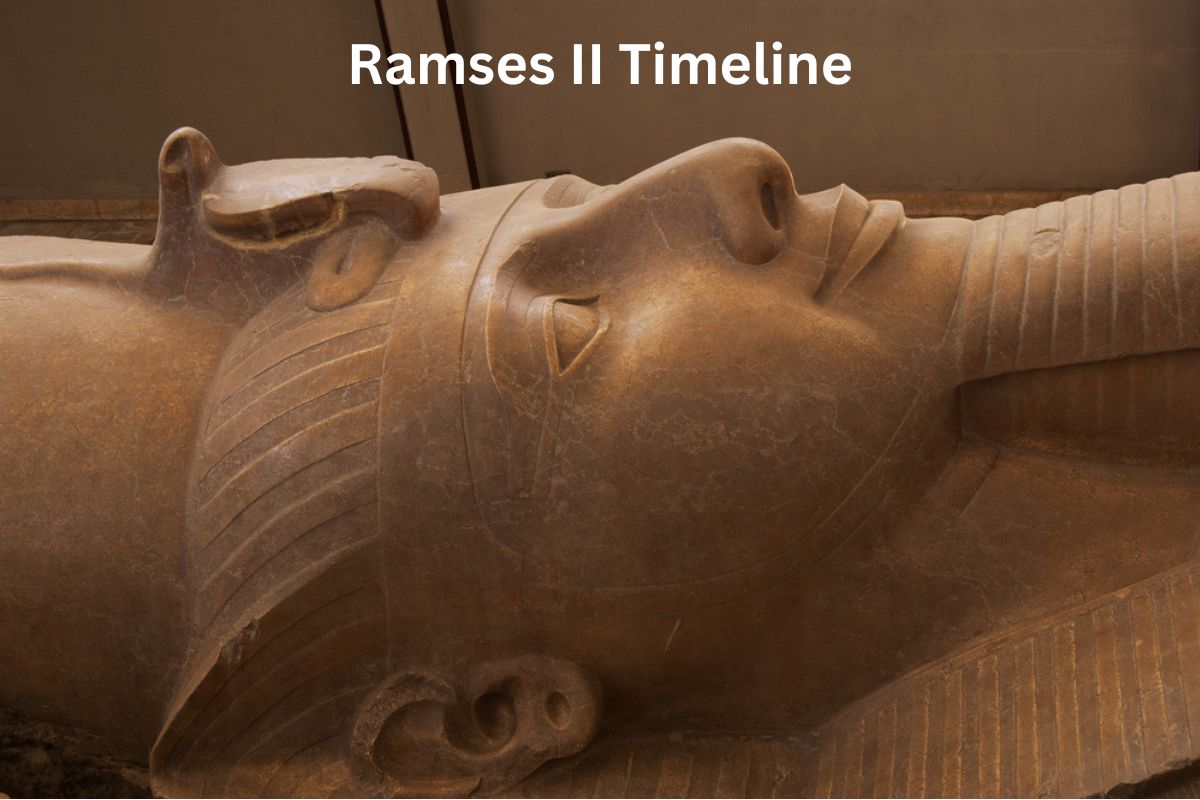Ramses II, commonly known as Ramesses the Great, was a prominent pharaoh of ancient Egypt who ruled during the 13th century BC.
His reign left an indelible mark on Egyptian history, characterized by his impressive military campaigns, extensive building projects, and diplomatic achievements.
From his birth in Pi-Ramesses to his death after a remarkably long reign, Ramses II’s legacy continues to captivate historians and enthusiasts alike.
This timeline highlights key events from his early co-regency to his role in shaping the ancient world’s political landscape and architectural heritage.
| Year | Event |
|---|---|
| Around 1303 BC | Born in Pi-Ramesses, Ancient Egypt |
| Around 1279 BC | Becomes co-regent with his father Seti I |
| Around 1274 BC | Battle of Kadesh (First Campaign) |
| Around 1258 BC | Negotiates the Treaty of Kadesh with the Hittites |
| Throughout Reign | Engages in extensive building projects |
| Around 1213 BC | Death at an estimated age of 90+ |
| 19th Century | Tomb and mummy rediscovered by archaeologists |
Timeline of Ramses II
Around 1303 BC: Born in Pi-Ramesses, Ancient Egypt
Ramses II, also known as Ramesses the Great, was born in the city of Pi-Ramesses, which was the capital of Egypt during the reign of his father, Seti I. He was likely born into a life of privilege and prestige as a member of the royal family.

Around 1279 BC: Becomes co-regent with his father Seti I
At a relatively young age, Ramses II was designated as a co-regent alongside his father, Seti I. This meant that he shared the responsibilities of ruling Egypt.
Seti I aimed to ensure a smooth transition of power to his son and heir. During this co-regency period, Ramses II likely received training in leadership, governance, and military affairs.
Around 1274 BC: Engages in the Battle of Kadesh (First Campaign)
One of the most significant events during Ramses II’s early reign was the Battle of Kadesh. This battle took place between the Egyptian forces led by Ramses II and the Hittite Empire, ruled by King Muwatalli II. The battle occurred near the city of Kadesh, located in what is now Syria.
The Battle of Kadesh is notable for being one of the earliest battles in history for which detailed accounts have survived. Ramses II’s version of events, depicted in inscriptions, describes his heroic actions and victory over the Hittites. However, other historical records suggest that the battle ended in a stalemate.
Despite the unclear outcome, the battle marked Ramses II’s prowess as a military leader and strategist. It also showcased the elaborate propaganda machinery of the time, with both sides emphasizing their achievements and downplaying losses.
Around 1258 BC: Negotiates the Treaty of Kadesh with the Hittites
After the Battle of Kadesh, Ramses II and the Hittite Empire realized the futility of continued conflict. As a result, they negotiated the Treaty of Kadesh, one of the earliest known peace treaties in history.
The treaty established a formal peace between the two powers, and it included provisions for mutual cooperation and non-aggression. This diplomatic achievement marked a significant departure from the often tumultuous relationships between ancient empires.

Throughout his Reign: Undertakes extensive building projects
Ramses II is known for his ambitious building projects, which aimed to glorify his reign and solidify his legacy. He constructed numerous temples, statues, and monuments throughout Egypt.
Notable examples include the Ramesseum, a mortuary temple dedicated to himself; the Luxor Temple; and the Abu Simbel temples, monumental structures carved into cliffs.
These structures not only showcased Ramses II’s wealth and power but also served as tributes to the gods and symbols of his dedication to the divine. The building projects required a massive workforce and considerable resources, demonstrating his ability to organize large-scale construction efforts.
Around 1213 BC: Dies at an estimated age of 90+
Ramses II’s reign is one of the longest in ancient Egyptian history, spanning over six decades. He is believed to have died in his 90s, an extraordinary lifespan for his time. His death marked the end of an era and a reign that left a lasting impact on Egypt and its history.
19th Century: Tomb and mummy are rediscovered by archaeologists
After centuries of obscurity, Ramses II’s tomb and mummy were rediscovered by European archaeologists in the 19th century. The tomb had been hidden in the Valley of the Kings, a burial site for many Egyptian pharaohs.
The rediscovery sparked renewed interest in ancient Egypt’s culture, history, and artifacts. Ramses II’s preserved mummy provided insights into ancient embalming techniques and the physical appearance of the legendary pharaoh.
Ramses II’s legacy extends beyond his monumental buildings and military campaigns. He is remembered as a skilled leader, warrior, and diplomat who left an indelible mark on Egypt’s history. His reign marked the zenith of the New Kingdom period in ancient Egypt, and his accomplishments continue to captivate people’s imaginations to this day.
His depictions and inscriptions shed light on the political and cultural dynamics of his time, and his story remains a source of inspiration for historians, archaeologists, and enthusiasts of ancient civilizations. The monuments he built, the peace treaty he negotiated, and the records he left behind contribute to our understanding of the complexities of ancient Egypt’s society and leadership.
